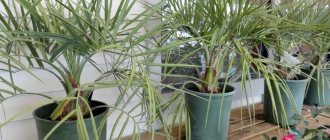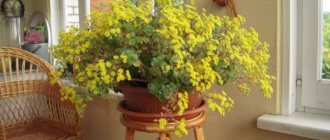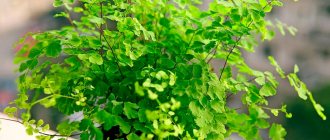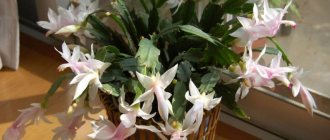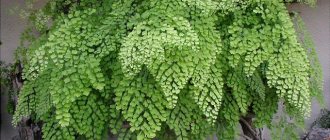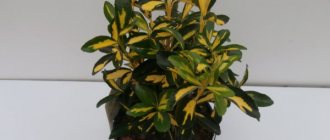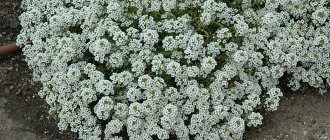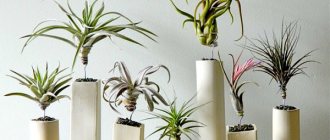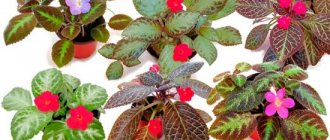Maidenhair is probably the finest and most delicately textured of all the ferns. The beautiful fronds of this plant are widely used to create large wedding bouquets. At the same time, you should not forget about one feature: after cutting, its fronds fade quite quickly. Read the article about the features of growing this indoor plant.
Adiantum capillus-veneris. ©Stacy
Humidity and temperature
Venus hair does not like heat. +16-21C will suit him. Constantly ventilate the room with maidenhair, but keep in mind that you cannot keep a waterproof ward in drafts.
In winter it should be cooler and no heating devices nearby. Air humidity should be maintained high. For this purpose, spray the leaves at any time of the year.
Caring for adiantum at home
Venus hair cannot be called a very capricious plant, but it will not grow in the kitchen or in a smoky bedroom. In summer, the fern can be taken outside, hidden from the sun in the shade of tree crowns. Adiantum also does not like drafts, although the room in which it is kept must be regularly ventilated.
With proper care, the plant will grow twice as large in a season.
Illumination
Don't try to place the pot closer to the sun. It’s better to give it a place on the northern or, as a last resort, eastern window sill. If the apartment has only southern windows, the lacy foliage of the plant will slowly begin to lose its bright color and die off. Therefore, it is better to push the adiantum deeper into the room.
Find a permanent place for the flower without moving or moving it too often.
Humidity and temperature
Venus hair does not tolerate heat well. He will be quite happy with 16-21°C. But if the temperature is 3-4 degrees higher or lower, nothing bad will happen. Constantly ventilate the room with maidenhair, but protect the plant from drafts. And also take care of frequent wet cleaning, since dust is contraindicated for ferns.
Place heating devices away. It will be easier for him to endure winter in cool conditions.
Air humidity should never decrease. Therefore, you will have to spray the leaves both in winter and summer. Do not use the spray bottle unless it is too cold in winter.
You can move the pot into a container with damp moss. Just don’t add too much water there.
Feeding
Adiantum should be fed very carefully. Use half as much fertilizer as indicated on the package. Use regular ones. Make sure there is no lime in the composition. Feed every 20 days from April to September. The rest of the time, the fern does not need nutrients.
Trimming
Needs to be pruned in spring. Form a beautiful crown by removing yellowed and wilted leaves. In this way, the adiantum will be able to direct its forces to the growth of new fronds. After pruning, moisten the bush with a sprayer and water.
Watering
When watering the adiantum, the main thing is to stick to the golden mean - do not let the substrate dry out, as the fronds will dry out, but also do not flood the roots to avoid the formation of rot. It is best to use bottom watering for this purpose. To do this, place the pot with the fern in a basin of water, after letting it settle. When the surface of the soil begins to shine, it means the plant has had enough to drink. Place it in the sink to drain any remaining liquid. Only after this can you carry it to its usual place.
In winter, sharply reduce the amount of watering, but continue to moisten the substrate from time to time.
Rain and aquarium water will only be beneficial. During the warm season, water a couple of times a week; during the rest period, switch to once a week.
Adiantum transplant
Do not overdo it with Venus hair transplants. Know that his roots prefer to live in close quarters. In addition, it grows very slowly. So, start replanting only when you notice the appearance of root tips from the drainage cells.
A young bush will require replanting in 2-3 years. This should be done exclusively in the spring. Choose a pot for transplanting that is only 2 cm larger in diameter. For an old fern, it is better to replace the soil layer by 5-7 cm.
There is no need to clear the roots from the soil. Pour a mixture of rotted leaves and peat (take 2 times more peat) into a wide ceramic pot with large drainage holes, transfer the bush to a new place of residence. Fill the resulting voids with soil, but do not compact it too tightly - let it be loose. Don’t forget to line the bottom of the container with drainage; you can use expanded clay for this. Take care that the root collar does not go deep into the ground.
You can dilute the soil mixture with white sand and finely ground pine bark, sphagnum and charcoal - whatever is available.
Feeding
You can use regular fertilizers, just halve the proportions compared to those indicated on the package. Fertilizers should not contain lime. Apply nutrients once every 20 days, from mid-spring to early autumn. Then take a break until next spring.
Use in folk medicine
Adiantum Venus hairs began to be used in medicine earlier than other ferns. The ancient Romans, noticing its resemblance to hair, recommended it for the treatment of baldness. In the Middle Ages in Armenia they treated jaundice, urolithiasis and chronic fever. Currently, in the Caucasus and Western Europe, the tradition of rinsing hair with adiantum infusion to give it shine has been preserved. In China, where traditional medicine is very popular, a decoction of the leaves is used to treat alcoholism and tobacco addiction.
There is a belief that ferns have the ability to protect the house from evil spirits, as well as calm their owners and eliminate conflicts.
Properties of adiantum
The composition of adiantum foliage includes triterpenoids, flavonoids, lipids, steroids, phenolcarboxylic acids and their derivatives, as well as essential oil. In Western Europe, infusions, medicinal powders and syrups, and preparation from the leaf plates of such a plant are widely used. Syrups and infusions are used as a remedy that has an antipyretic and expectorant effect, and the aqueous extract has antimicrobial properties.
Products made from adiantum are used for diseases of the liver, respiratory tract, bladder and spleen. The juice obtained from the leaves is used to make compresses and lotions against rabid animal bites for detoxification purposes, as well as in the treatment of malignant ulcers. In Chinese medicine, a decoction is prepared from the leaves of adiantum, which helps in the treatment of alcohol addiction.
To reduce the amount of dandruff, it is recommended to rinse your hair with a decoction of adiantum leaves or you can add the juice of this plant to the water. In the treatment of psoriasis, an alcoholic tincture of adiantum is used.
Application
In herbal medicine, decoctions, infusions, powders and syrups based on ferns are used. They allow you to cope with diseases of the respiratory tract, bladder, spleen, and liver.
People suffering from allergies should be careful when purchasing adiantum. Ripe spores can trigger an attack.
Watering
You need to know how to water a flower. The substrate must not be allowed to dry out, otherwise the fronds will begin to dry out. But under no circumstances should you overwater, otherwise the roots will rot.
The most convenient way is to immerse the flowerpot with your green friend in a bowl of water. Wait until the top layer of soil shines and put it in the sink to drain off the excess. After this, return to its normal place.
In winter, the intervals between waterings need to be doubled, but such baths should be carried out from time to time.
Signs and superstitions
Since ancient times, the plant has been considered a female flower. Therefore, it is best to place it in a girl’s bedroom. It will bring harmony and peace to the room. The plant prevents the development of negative factors, relieves self-doubt and anxiety.
Venus hair is an attractive plant that resembles curled hair. Airy bushes and openwork leaves look unusual, so they will decorate the room and attract attention. The fern does not require special living conditions, so it is suitable for cultivation even by novice gardeners.
Sources:
- https://greensotka.ru/dekorativno-listvennye/venerin-volos.html
- https://rastenievod.com/adiantum.html
- https://rostok.info/komnatnye-rasteniya/paportnikovye/adiantum.html
- https://prorasteniya.com/komnatnye/paporotniki/adiantum.html
- https://ProZvety.ru/katalog-rastenij/paparotniki/adiantum-foto
- https://agronom.guru/adiantum
- https://komnatnie-rastenija.ru/adiantum-venerin-volos-uhod-v-domashnih-uslovijah/
- https://pocvetam.ru/komnatnye-rasteniya/paporotniki/venerin-volos.html
Adiantum transplant
Growing at home also involves Venus hair transplantation. You need to keep your pet in a cramped pot and resort to transferring it to a new pot only when the roots become visible in the drainage holes. The procedure is carried out exclusively in the spring.
For a young fern, the interval between transplants should be 2-3 years. You don’t have to touch the old one, just replace the top layer of soil mixture with a new one. The flowerpot should be only 2 cm wider in diameter than the old one.
After removing it from the old pot, transfer the plant to a new one without shaking off the old soil. Plant in a mixture of peat and rotted leaves in a 2:1 ratio. Before planting, be sure to line the bottom of the container with a layer of expanded clay for drainage.
Possible problems in cultivation and diseases
If not properly cared for, the flower begins to dry out and die. If you notice these changes in time, adjusting the maintenance conditions will help restore the plant.
The leaves are turning pale
Venus hair can change the color of leaves. The color turns from bright green to whitish or yellowish. Reasons for such changes:
- excess light or exposure to direct sunlight;
- lack of fertilizers;
- too frequent watering or stagnation of moisture.
The tips of the leaves are drying out
If the tips of the leaves become dry, this indicates extreme heat and lack of humidity. To eliminate the signs, you need to spray the plant more often.
Pests
Adiantum is relatively rarely exposed to diseases and pest attacks. This feature can be explained by the fact that its leaves have bactericidal properties. Among the insects that can settle on the plant are scale insects and fern aphids. To eliminate parasites, the flower should be treated with insecticides for indoor plants.
Reproduction methods
Adiantum can be propagated by two methods:
- dividing the bush;
- sowing spores.
The last method is too complicated, so it is not advisable for novice gardeners to use it.
Dividing the bush
The procedure is carried out in the spring during transplantation. Having pulled the bush out of the pot, it is divided into several parts manually or using a knife. Each part should have a piece of root and a leaf with a bud. The cut areas should be sprinkled with activated carbon and then kept in the root. After this, plant each part in a separate pot, leaving the root collar outside.
It is advisable to arrange a mini-greenhouse for the seedlings to keep them warm and humid. Be patient - Venus hair will not grow right away. This will take some time.
Growing with spores
Seeds should be collected from the bottom of the leaf blades. It is advisable to take the largest ones. Soak them in a solution of potassium permanganate and let them dry for another 2 weeks. Then you can plant it in soil mixture poured into a shallow box. Scatter the spores over the surface and cover with glass on top.
First, place the container in a dark but warm place. In the middle of the day, remove the glass for ventilation. As soon as the first shoots appear, remove the glass and move the container closer to the window, but do not place it on the windowsill itself.
Sprouts that have reached 2-3 cm, dive into another box, planting them at a greater distance. It can be transplanted to a permanent place when the adiantums reach 7 cm.
Variety of species
The genus has about two hundred species. Usually, Venus hair is grown as a houseplant, which feels great outdoors only in the spring and summer. However, some of the wild species of adiantum can also be planted in open ground. But remember that in winter they still need to be provided with more gentle conditions (move the plant to a cool place protected from drafts). Thus, the most popular and practical types to care for are:
- Adiantum transparent: fern with feathery broad-oval leaves of faded green color, concave at the bottom. Horseshoe-shaped spores are distributed along the top of the leaf.
- Adiantum is delicate: with short root shoots and leaves of varying shapes (widely lobed, wedge-shaped on black petioles). Feels good in a cool room and is used for decoration. In nature, it lives in the tropical zone of the American continent, on the Greater and Lesser Antilles.
- Adiantum is finely pubescent or finely hairy. Lanceolate, notched leaves, drooping down on both sides, on strong, small stalks with bristles. Disputes are frequent. Cultivated as a houseplant. It is found in wild form in the mountains of the African continent, in the northern part of the Hindustan Peninsula, on the mountain plateaus of Australia, and in Madagascar.
- The beautiful adiantum, or Adiantum formosum, is a fern with a creeping thin root and oval dark green leaves. The petiole of this species has a rough surface. The spores are predominantly concentrated in the upper part of the leaf blade. Lives on the islands of the Pacific Ocean.
- Adiantum cuneatum is similar to the previous one, but it has kidney-shaped spores in notches along the edge of the leaf. Found on the South American continent.
- Maidenhair maidenhair. Very popular among indoor ferns. Up to 70 cm in height, fern with a creeping long rhizome in dark narrow scales. The leaves are divided into segments, very thin, on petioles similar to women's hair. The sori are visible on the thin body of the leaf. It grows well indoors. Widely distributed on the Mediterranean coast (in the mountains), in Europe, the Crimean mountain ranges, the American continent, and on numerous Asian plateaus.
- Adiantum stopiformis is considered one of the most beautiful species of this genus. A graceful perennial plant with double-pinnate, fan-shaped leaves. It has long been grown in winter gardens and greenhouses.
- Adiantum Ruddy: native to the South American tropics. It has long (45 cm) creeping leaves with characteristic toothed segments, each of which is no more than a centimeter. Petioles are dark brown or almost black. Adiantum Ruddy is popular in indoor floriculture; several varieties are cultivated at home: Victoria Elegans;
- Fragrantissima (also known as Fragrance);
- Fritz Lithii;
- Gracilimum.
Photo gallery: variety of adiantums
The leaves of the transparent adiantum reach 40 cm, which allows florists to successfully use them in cutting bouquets. Tender adiantum - the owner of long (about 70 cm) and wide (40-50 cm) leaves. Fine-haired adiantum has creeping brown rhizomes, allowing it to “live” on vertical surfaces Adiantum beautiful is not too capricious, so it can fully grow in both warm and cool rooms. Compared to Adiantum beautiful, the wedge-shaped variety has slightly larger leaf sizes: up to 45 cm in length and 25 cm in width. Venus hair spores form in the upper part fan-shaped leaves
Maidenhair has antitussive, expectorant, astringent properties, therefore it is valued in folk medicine
Diseases and pests
By the appearance of Venus's hair, one can judge the problems that have arisen with the pet.
Pests
As soon as you notice the harmful activity of spider mites or aphids, take immediate action. You need to remove the cobwebs, remove discolored fronds, and give your green friend a bath using laundry soap. To be sure, you should also use insecticides.
Scale insects should be combated with a cotton swab dipped in alcohol.
Possible problems
Failure to follow the rules for caring for your pet indoors can lead to death, so you should adhere to all necessary measures.
Yellowing of leaves and dark stains
Appear when the temperature is too low.
Drying of the crown
May be caused by drafts or hot air flows coming from the batteries.
The fronds are wrinkled
Due to insufficient watering.
Pale leaves
Occurs due to excess sun or lack of nutrients.
Drying ends
This happens due to low air humidity in the room.
Rolling leaves
Indicates low temperature or too high air humidity.
Don't wait to see Adiantum flowers. Venus hair never blooms. It is bred solely for its decorative appearance. But if you put a flowerpot with this fern at home, you can count on happiness and love.
Signs associated with adiantum
According to popular beliefs, adiantum has a beneficial effect on female energy, bringing happiness and love to the home. It’s not for nothing that wedding bouquets are often decorated with fern leaves.
It is also believed that in families where Venus hair grows, conflicts are extinguished by themselves. In addition, the plant is credited with the ability to attract financial luck.
Well, the legend about happiness from finding a fern flower on the night of Ivan Kupala is probably known to everyone without exception.
So get started growing adiantum as soon as possible, and everything will be fine with you.
Photo of the plant Adiantum (Venus hair)
Description and properties of the plant
Ferns are one of the most ancient representatives of flora on our planet. In the wild they can be found less and less often. This is probably why the culture is so popular among gardeners.
Adiantum fern is a herbaceous plant that is very unpretentious in terms of care. In their natural environment, ferns usually grow near bodies of water or in swampy areas with high humidity levels. Adiantum is not a tall crop. The plant reaches a height of 75-85 cm. The root system of the herbaceous crop is represented by branched roots covered with scales.
Adiantum is rarely found in the wild
The leaves have a matte and shiny surface. The width of the leaf plate reaches 50 cm, the length is about 6 cm. The surface of the leaf resembles a fan. The color is often green, but there are varieties with bluish leaves. Adiantum foliage resembles a woman's curls. This is where the popular name for the culture comes from: “hair of Venus.”
Fern is a very valuable plant that has a number of useful properties:
- antiseptic;
- antipyretics;
- expectorants.
In addition, the herbaceous plant is often used in cosmetology. This is due to the content of important substances in it:
- lipids;
- organic acids;
- flavonoids;
- carbohydrates.
Fern is actively used in folk medicine for coughs, diseases of the pancreas, respiratory system, liver, and genitourinary system. Herbal compresses help remove toxins from the bite of rabid animals. In addition, fern is effective in treating skin diseases: dermatitis, ulcers, boils, psoriasis. Adiantum copes even with inflammation of the gums effectively. To relieve swelling and swelling, it is recommended to chew fern leaves.
An indoor flower purifies the air well
